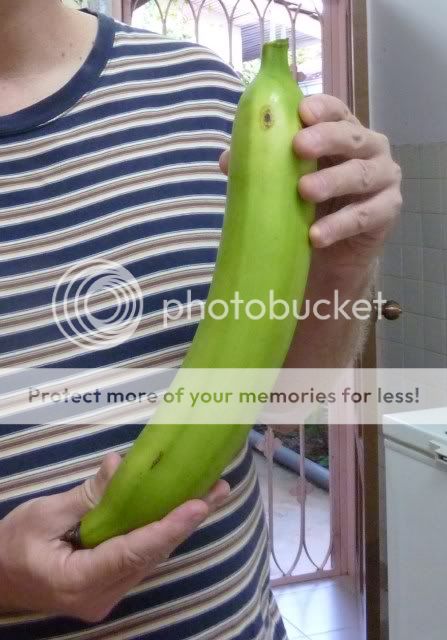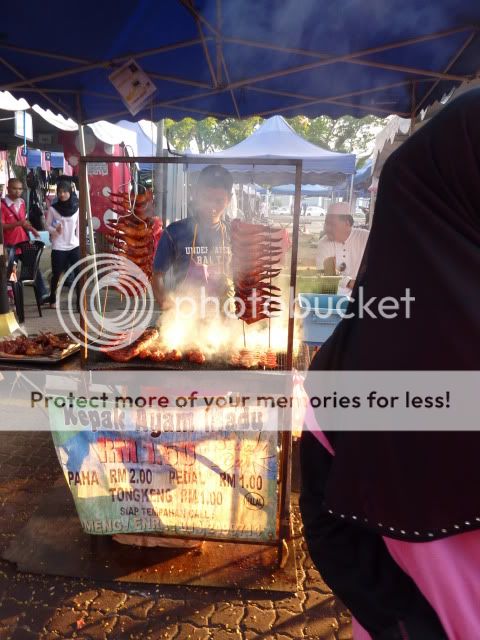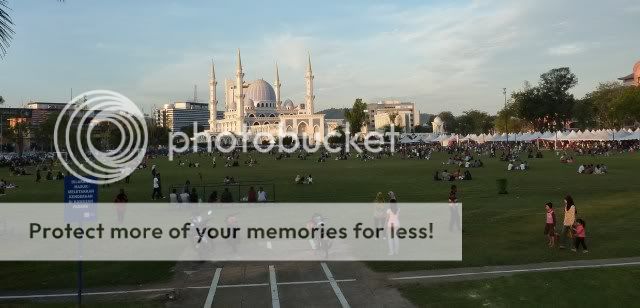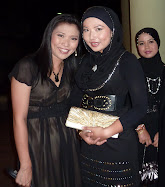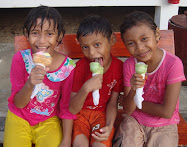The Muslim fasting month of Ramadan is over, and Hari Raya Aidilfitri (Eid al-Fitr) feasting has begun. One of the unique elements of the "fasting" month is that more food is available during this month than the other eleven. Yes, of course, my Muslim colleagues and friends fast during the day (between sunup and sundown), but once the sun sets they head off to eat and eat and eat.
A news item recently stated that Malay families spend 25% MORE on food during the fasting month and I would have a hard time understanding this fact until I had actually experienced the month for myself. One only needs to take a short trip around town, however, to see why that is so.
In many places around Kuantan, vendors line up to sell buka puasa (break fast) treats starting around 4pm. One of the largest concentrations of vendors are those that set up alongside the green sward fronting the State Mosque. Here many varieties of snack items are sold, such as kuih, pancakes, barbequed honey chicken (first photo) and lemang, a sticky rice which is steam cooked inside bamboo tubes (second photo). Thousands of Kuantan residents visit these snack vendors who make up for the lost revenue from not having breakfast or lunch business. Some food varieties are only available during the fasting month.
After purchasing their take-out buka puasa fare, Kuantan residents will go some place to wait until the Maghrib prayer call (at dusk) and then break fast before going to the mosque or surau for prayers. In front of the State Mosque, hundreds gather for prayers which are broadcast outside (third photo).
Following prayers, the crowd heads out to local hotels and restaurants for lavish Buka Puasa feasts. The prices of these have been rising rapidly in recent years, and places in Kuala Lumpur, for example, can get away with charging up to RM100-150 per person for the meals. Since Malay culture stresses family time together, I note that some families will go out and buka puasa together every night during the month at places that may be too expensive the rest of the year. Thus, it is easy now to see how they can spend 25% more for food during this season. I know that it sounds strange, but I have often suggested to friends back home, that if they really want to sample Malaysian food, come during the fasting month!
Buka Puasa picnickers outside State Mosque in Kuantan; note the vendor tents to the right.


